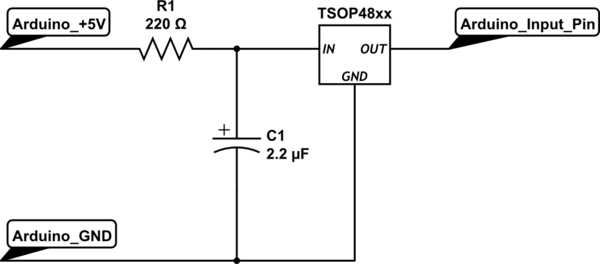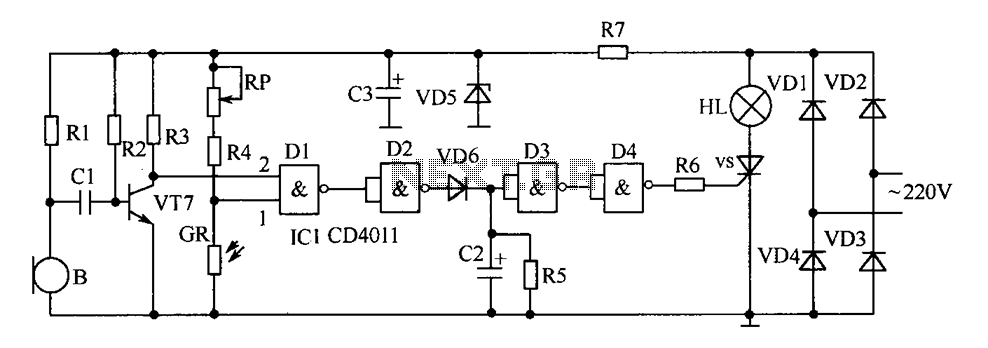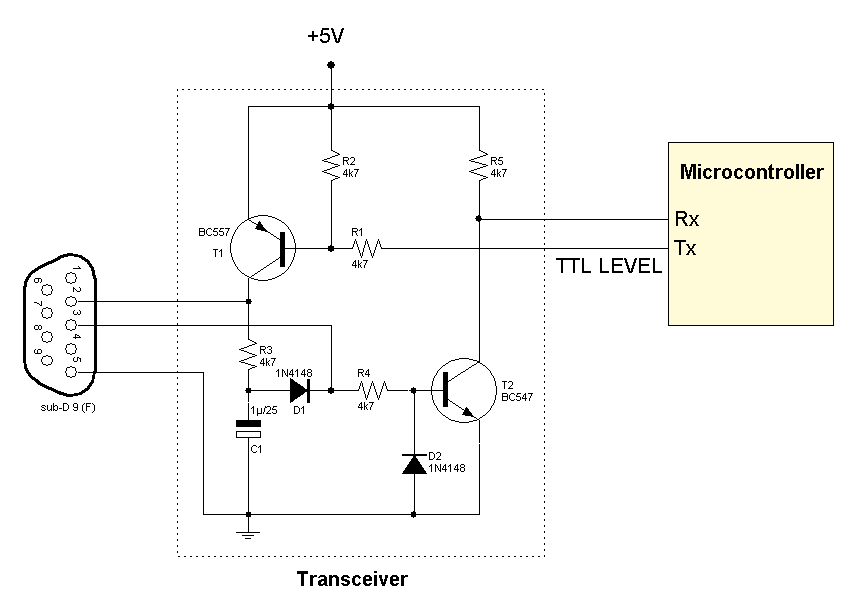
Remote Alarm For Smoke Detector circuit

This alarm circuit is designed to monitor a mains-powered smoke detector located in a shed used for dog kennels. It ensures complete isolation from the mains, allowing low-voltage (12V) cabling to connect to the alarm circuit situated inside the house. During operation, the alarm signal from the smoke detector is rectified using bridge rectifier BR1 and subsequently fed to opto-isolator OPTO1 through resistor R3. This configuration drives the gate of SCR1, which activates a piezo siren featuring an inbuilt oscillator.
The described alarm circuit employs a bridge rectifier (BR1) to convert the AC alarm signal from the smoke detector into a DC signal suitable for further processing. The bridge rectifier consists of four diodes arranged in a specific configuration to ensure that the current flows in one direction, regardless of the input polarity. This conversion is critical for the subsequent stages of the circuit, as it prepares the signal for isolation and amplification.
The opto-isolator (OPTO1) serves a dual purpose: it provides electrical isolation between the smoke detector and the alarm circuit, and it also amplifies the signal. This isolation is essential for safety, particularly in preventing high voltage from affecting the low-voltage components. When the alarm signal reaches the opto-isolator, it activates the internal LED, which in turn triggers the phototransistor, allowing current to flow through to the next stage of the circuit.
Resistor R3 is strategically placed to limit the current flowing into the opto-isolator, ensuring that the device operates within its specified limits. The value of R3 must be chosen carefully to provide adequate current for the opto-isolator while protecting it from excessive current that could lead to failure.
The gate of SCR1 is driven by the output of the opto-isolator. When the phototransistor within the opto-isolator is activated, it allows current to flow to the gate of the silicon-controlled rectifier (SCR1). This component is designed to switch on and conduct current when triggered, allowing it to control higher power loads, such as the piezo siren. The piezo siren, equipped with an inbuilt oscillator, generates a loud sound when activated, effectively alerting individuals to the presence of smoke detected by the smoke detector.
Overall, this alarm circuit is a robust and effective solution for monitoring smoke detection in remote areas, ensuring safety while maintaining low-voltage operation. The careful selection of components and their arrangement within the circuit provides reliable performance and necessary isolation from mains power.This alarm circuit was designed to monitor a mains-powered smoke detector located in a shed (which is used to house dog kennels). It provides complete isolation from the mains so that low-voltage (12V) cabling could be run to the alarm circuit which is located inside the house.
In operation, the alarm signal (I) from the smoke detector is rectified using bridge rectifier BR1 and then fed to optoiso lator OPTO1 via resistor R3. This in turn drives the gate of SCR1 which turns on and activates a piezo siren with inbuilt oscillator..
🔗 External reference
The described alarm circuit employs a bridge rectifier (BR1) to convert the AC alarm signal from the smoke detector into a DC signal suitable for further processing. The bridge rectifier consists of four diodes arranged in a specific configuration to ensure that the current flows in one direction, regardless of the input polarity. This conversion is critical for the subsequent stages of the circuit, as it prepares the signal for isolation and amplification.
The opto-isolator (OPTO1) serves a dual purpose: it provides electrical isolation between the smoke detector and the alarm circuit, and it also amplifies the signal. This isolation is essential for safety, particularly in preventing high voltage from affecting the low-voltage components. When the alarm signal reaches the opto-isolator, it activates the internal LED, which in turn triggers the phototransistor, allowing current to flow through to the next stage of the circuit.
Resistor R3 is strategically placed to limit the current flowing into the opto-isolator, ensuring that the device operates within its specified limits. The value of R3 must be chosen carefully to provide adequate current for the opto-isolator while protecting it from excessive current that could lead to failure.
The gate of SCR1 is driven by the output of the opto-isolator. When the phototransistor within the opto-isolator is activated, it allows current to flow to the gate of the silicon-controlled rectifier (SCR1). This component is designed to switch on and conduct current when triggered, allowing it to control higher power loads, such as the piezo siren. The piezo siren, equipped with an inbuilt oscillator, generates a loud sound when activated, effectively alerting individuals to the presence of smoke detected by the smoke detector.
Overall, this alarm circuit is a robust and effective solution for monitoring smoke detection in remote areas, ensuring safety while maintaining low-voltage operation. The careful selection of components and their arrangement within the circuit provides reliable performance and necessary isolation from mains power.This alarm circuit was designed to monitor a mains-powered smoke detector located in a shed (which is used to house dog kennels). It provides complete isolation from the mains so that low-voltage (12V) cabling could be run to the alarm circuit which is located inside the house.
In operation, the alarm signal (I) from the smoke detector is rectified using bridge rectifier BR1 and then fed to optoiso lator OPTO1 via resistor R3. This in turn drives the gate of SCR1 which turns on and activates a piezo siren with inbuilt oscillator..
🔗 External reference





